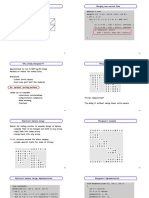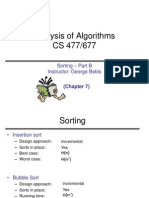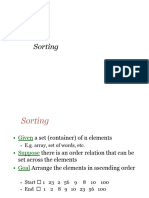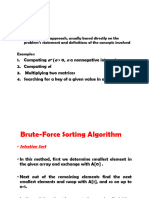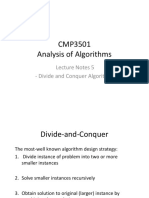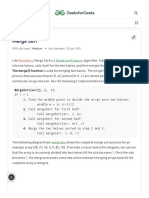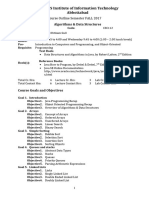0% found this document useful (0 votes)
90 views16 pagesOnline Instructions For Chapter 2: Divide-And-Conquer: Algorithms Analysis and Design (CO3031)
The document provides online instructions for Chapter 2 on divide-and-conquer algorithms from the course Algorithms Analysis and Design. It outlines the topics covered in the chapter, including the divide-and-conquer strategy, quicksort, mergesort, external sorting, and binary search trees. It then focuses on explaining mergesort, external sorting, and providing the time complexity analysis of these algorithms.
Uploaded by
Trần Quốc KhangCopyright
© © All Rights Reserved
We take content rights seriously. If you suspect this is your content, claim it here.
Available Formats
Download as PDF, TXT or read online on Scribd
0% found this document useful (0 votes)
90 views16 pagesOnline Instructions For Chapter 2: Divide-And-Conquer: Algorithms Analysis and Design (CO3031)
The document provides online instructions for Chapter 2 on divide-and-conquer algorithms from the course Algorithms Analysis and Design. It outlines the topics covered in the chapter, including the divide-and-conquer strategy, quicksort, mergesort, external sorting, and binary search trees. It then focuses on explaining mergesort, external sorting, and providing the time complexity analysis of these algorithms.
Uploaded by
Trần Quốc KhangCopyright
© © All Rights Reserved
We take content rights seriously. If you suspect this is your content, claim it here.
Available Formats
Download as PDF, TXT or read online on Scribd
/ 16









